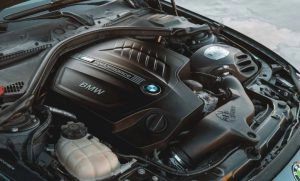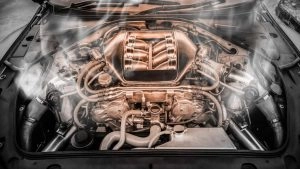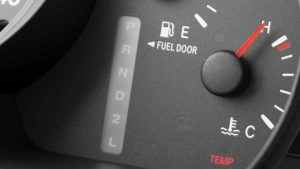The car is a vital means of transportation for many people, and one of the most important aspects of its care is maintaining the health of its engine and cooling it effectively. Many people may encounter problems with cooling the car engine when its temperature suddenly rises, which can negatively affect the car's performance and may cause engine damage.
Therefore, we will learn about the method of cooling a car engine when its temperature suddenly rises, and we will provide you with tips and guidance to maintain your car's health.

Steps for cooling down the car engine when its temperature suddenly rises.
Turn off the air conditioning.
Running the air conditioner increases the load.The EngineBy increasing the electrical load on the generator and increasing the load of the condenser fan, when the air conditioner is turned on, energy from the engine is used to operate the compressor pump and the condenser fan, which significantly increases the engine temperature.
By turning off the air conditioner, the load on the engine will be reduced, allowing it to work easier and more efficiently. Without the extra load caused by the air conditioner, the engine can focus on cooling and lowering the temperature, which helps in cooling the car engine, preventing any damage to it, and improving its lifespan.
However, note that turning off the air conditioner can increase the temperature inside the car and raise the cabin temperature, which could also cause the passengers to experience excessive heat and increased sweating. Therefore, you should ensure to open the windows for ventilating the cabin and improving the external air flow in case of turning off the air conditioner.
Turn off the engine
If you need to cool down the car engine when its temperature starts to rise, an important thing you must do is to stop the car and turn off the engine. This allows the engine to cool down, to check the problem, and prevent additional damage to the engine.
The engine can be subjected to thermal stress and can get damaged if it is not shut off as soon as its temperature rises. Therefore, it's necessary to immediately turn off the engine when it begins to overheat.
You should also ensure that the location where you have stopped is safe and does not expose you to danger, such as the risk on the side of a highway. Move the car to a safe place if necessary, and make sure the engine is completely turned off before exiting the vehicle.
Open the front hood of the car.
Opening the car's front hood is an important step in the engine cooling process. When the hood is opened, cold air from outside can enter the engine and cool it down, thereby eliminating the hot air that accumulates inside the engine.
Additionally, opening the front cover allows you to check for any water or other fluid leaks, which could cause the engine temperature to rise.
It is noteworthy that one should wait until the engine cools down a bit before opening the hood, and it is recommended to use thermal gloves to avoid hand burns in case the engine is still hot.
Also read:Car maintenance during the summer season.

Check the coolant level.
Checking the coolant level is an important step in the process of cooling the car's engine after it has unexpectedly heated up. Once the engine has completely cooled down, you should locate the coolant reservoir, which is typically found at the front of the engine and might have a distinctive color (usually green or red).
After you reach the coolant tank, make sure that the level of coolant inside the tank is within the range specified in the owner's manual or the car's brand label. If the amount is insufficient, you should add an appropriate amount of coolant to the tank.
It's very important to use the coolant recommended by the car manufacturer, and it's preferable to avoid using used or mixed coolant with another type as this could lead to problems in the hydraulic system or engine damage.
Search for any leaks or damage in the cooling system.
When you need to cool down the car engine after a sudden rise in its temperature, you should look for any leaks or damage in the cooling system. Leaks can be detected by inspecting the ground under the car for any wet spots, or by looking for any signs on the hose, coolant tank, or radiator.
If you notice any signs of leaks or damage, you should immediately stop operating the vehicle and contact a repair shop to provide the necessary maintenance.
Generally, it's advisable to avoid driving the car when there is any increase in engine temperature, or any leaks or damages, as these can cause irreversible damage to the engine.

Tips to Prevent a Car's Temperature from Rising
Here are some important tips that could help you reduce engine damage while driving.
Regularly check the coolant level in your car.
Store an extra bottle of antifreeze and a gallon of coolant in the car's trunk.
Monitor your car's thermostat while driving.
Do not overuse the car's air conditioner on extremely hot days.
Assist in cooling the engine by turning on the heat at the first sign of a temperature increase.
Refer to the car owner's manual to stay constantly informed about service flow operations.Coolant

Comments